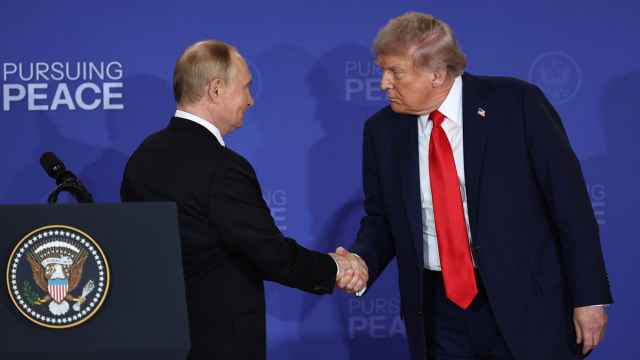Until recently, relatively little attention was paid to states' balance sheets. Measurement and reporting were neglected. Even today, states' liabilities receive considerable attention, while their asset sides receive significantly less.
In an earlier era, states owned substantial industrial assets. This "commanding heights of the economy" model was rejected largely because it seriously under-performed, especially when state-owned sectors were protected from competition (as was the norm). Efficiency declined. But, more important, the absence of entry and exit by firms, a key ingredient of innovation, caused dynamism to suffer and losses to grow over time.
The model's shortcomings led to privatization in many developed and developing countries. In Europe, privatization was viewed as a key step in the integration process. The theory, in Europe and elsewhere, was that states could not be impartial owners of industrial assets. Through regulation, public procurement, and hidden subsidies, they would favor their own assets.
Of course, state ownership is not the only way to impede efficiency and dynamism. Regulations in a range of countries, from Japan to Italy, create sectors that are sheltered from competition, with detrimental effects on productivity. This pattern is particularly pronounced in the non-tradable sectors (which account for two-thirds of the economy), where the discipline of foreign competition is absent by definition. Even here, foreign-based domestic competitors could improve performance.
It is important that more attention is now paid to public liabilities — not only growing sovereign debt, but also larger, non-debt liabilities embedded in social-insurance programs. A combination of defective growth models, rising longevity, and unanticipated increases in costs (such as health care in America) have caused these longer-term liabilities to explode.
Reining in debt and other liabilities has substantially reduced governments' scope for sustaining demand in the face of severe negative shocks, thus reducing their ability to buy time for structural adjustment in the private sector. For now, investment in a shift to a sustainable growth and employment pattern has been crowded out. Shifting consumption to investment via tax increases is possible, but too problematic politically, with the burden-sharing issue usually leading to impasse and inaction.
Meanwhile, the asset side of states' balance sheets remains largely invisible. States own land, mineral rights, and infrastructure. Some have sovereign wealth funds. Many have public pension funds of substantial magnitude, consisting of diversified portfolios of assets. These assets are, in a sense, spoken for — there are claims on them in the form of liabilities, which have grown as expected risk-adjusted returns on assets decline. But they do represent a partial funding of public liabilities and are an element of resilience.
By contrast, in China, the asset side of the state balance sheet is very large: land, foreign-currency reserves of $3.5 trillion and around an 85 percent stake in state-owned enterprises that account for about 40% of output. This balance-sheet configuration has helped China to respond to shocks and sustain high levels of public-sector investment. The liability side will expand as social insurance grows — but slowly, owing to a fear of underestimating the liabilities being created.
In the best case — without a sharp decline in financial assets accelerating an economic downturn, a sudden collapse of a defective growth model, or even rapid increases in liabilities associated with demographic shifts or health-care technology — it might make sense to focus only on controlling liabilities. But a best-case scenario provides a poor policy framework in our imperfect world.
In fact, states are routinely called upon to deal with a wide range of market failures or limitations.
Here is the dilemma: Governments with substantial assets have flexibility and the capacity to act, but they can also mismanage their assets to the detriment of markets and economic dynamism. In China, where the asset side of the balance sheet is large, the strategy of shrinking it via privatization has been largely rejected, at least for now. The loss of resilience would be too great.
That leads to the challenge of effective management of public assets — management that promotes rather than impedes market efficiency and innovation.
Here, what might be called the pension/sovereign-wealth-fund model — in which a public entity holds and manages a diversified portfolio of assets as a financial investor with appropriately specified duties and governance — seems to be the right way to go. The asset side of the balance sheet is maintained in the aggregate, but the management of the assets, particularly the diversification of holdings, can be thought of as prudent and de facto privatized.
For developed countries, increasing resilience and flexibility over time by building public assets should be a long-term priority. Periodic systemic risk affects entire economies and public finances, not only financial markets, and governments should be able to respond during periods of rapid structural change.
In practice, this means two things. First, once a collective choice is made about the desired levels of social insurance, the implied liabilities should be fully funded over time. The alternative is a poor intergenerational burden-sharing choice.
Second, governments, like individuals, households, and businesses, need to save for a rainy day. That is all the more important in periods — like the current one — of rapid change, high volatility and only partly predictable systemic instability.
Michael Spence, a Nobel laureate in economics, is professor of economics at New York University's Stern School of Business. © Project Syndicate
Related articles:
A Message from The Moscow Times:
Dear readers,
We are facing unprecedented challenges. Russia's Prosecutor General's Office has designated The Moscow Times as an "undesirable" organization, criminalizing our work and putting our staff at risk of prosecution. This follows our earlier unjust labeling as a "foreign agent."
These actions are direct attempts to silence independent journalism in Russia. The authorities claim our work "discredits the decisions of the Russian leadership." We see things differently: we strive to provide accurate, unbiased reporting on Russia.
We, the journalists of The Moscow Times, refuse to be silenced. But to continue our work, we need your help.
Your support, no matter how small, makes a world of difference. If you can, please support us monthly starting from just $2. It's quick to set up, and every contribution makes a significant impact.
By supporting The Moscow Times, you're defending open, independent journalism in the face of repression. Thank you for standing with us.
Remind me later.






